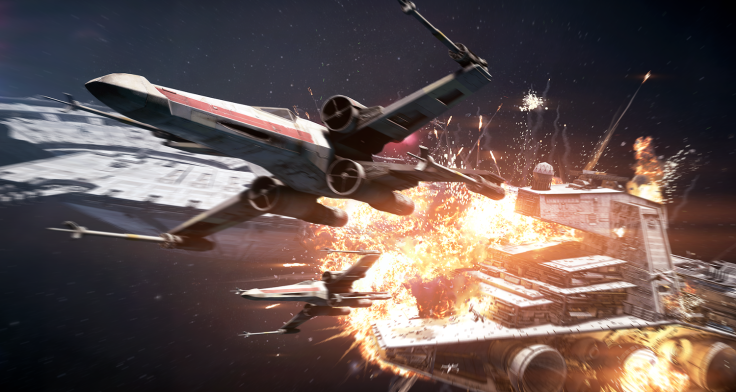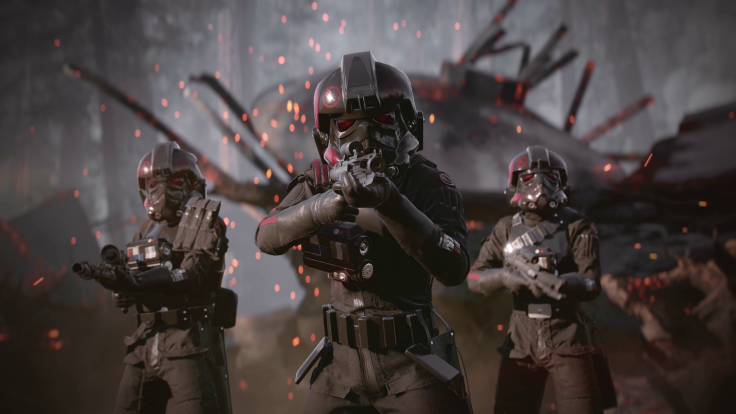Star Wars Battlefront 2 review: Cynical business practices tarnish DICE's much-improved sequel
A complete package hamstrung by a woefully implemented progression system.
Sequels rarely go to the lengths Star Wars Battlefront 2 has to address the concerns of its fans. Every key component of this huge shooter expands on the 2015 original, resulting in a product that's more complete than developer DICE's initial reboot ever was.
It took multiple premium expansions for that first game to come close to feeling as substantial as it should have upon release, and for that publisher EA came under fire. The criticism led to the announcement that its sequel would be supported with free updates introducing new characters, modes and maps.
There's a catch though.
To pay for this free content, Battlefront 2 has been built to generate steady revenue stream for EA via microtransactions. Players can buy an in-game currency called 'crystals' that can be traded for loot boxes containing all manner of items and upgrades.
The ability to purchase crystals was temporarily removed for Battlefront 2's launch, following an immense uproar over how the the game's pre-release trial encouraged players to spend money by only drip-feeding the other variety of in-game currency ('credits') accumulated through regular play.
It's been a total mess, and EA's not-exactly-glowing image has been tarnished even further. The issue has dominated discussion of the game and spurred a larger debate within the industry, but the ramifications are for another article. What's important to this review is how microtransactions impact the game and how players progress.
'Star cards' represent the meat of Battlefront 2. Players can equip three to each class of character, ship and to individual playable characters from the Star Wars universe, offering new abilities and a variety of very small buffs.
Cards are unlocked randomly through loot boxes, but the rate at which players acquire these boxes is painfully slow, especially if you also want to unlock expensive playable characters like Darth Vader and Luke Skywalker – and who doesn't want to play as them?
Fans wanted Battlefront 2 to have a greater depth, and it certainly does in a way, but what's there counts for very little when revealing that depth is so laborious. Customisation is only fun when players have plenty of options to experiment with, and with these current drop-rates it will take an age to unlock enough to do so.
This mercilessly slow grind is easy to interpret as a means of encouraging players to spend money to unlock loot boxes and improve their stats quicker. The problem is Battlefront 2 doesn't so much nudge players towards this line of thinking as it forcibly shoves them.

As mentioned, EA has removed microtransactions for now, but they will return – and it remains to be seen how it will be handled.
The issue casts a long shadow, and that's unfortunate because DICE has done great work building on the last game to create an impressive and fun shooter.
Galactic Assault, in which teams attack or defend territory, is Battlefront's main mode of play once again, this time improved by a greater variety in level design and set-up. The action isn't always focused on attacking or defending AT-AT walkers, and the rebels aren't always the one on the front foot.
With many more maps this time, drawing from the every era of Star Wars, it's disappointing that players must swap sides after each round rather than move on to a new location. Swapping sides serves no competitive purpose – teams aren't judged on their performances to declare an overall winner like in Call of Duty: WW2's War mode for example – so the result is frustrating.
Four additional modes cover the previous game's major beats. Heroes vs Villains casts players as iconic characters for fun four-on-four scraps. Strike offers a more focused game for teams of eight. Blast is a standard team deathmatch mode. Then, there's Starfighter Assault.
Battlefront 2015's aerial combat was basic, lacking any of the depth or nuance that would have made it fun for sustained periods. For the sequel everything was scrapped and Burnout veterans Criterion Games brought in to rebuild things from the ground up. The results are outstanding.

Every core ship handles smoothly, with a variety of movement to be mastered by those willing to put in the time. Each era-specific ship offers something different too, justifying the class system for vehicles, and heroic vessels feel powerful without being overpowered bullet-sponges.
While minor clipping issues annoy (it might be realistic, but my whole ship exploding because I grazed a flimsy antenna is certainly irritating), Criterion has done fine work here that I hope affords the marginalised developer an opportunity to make a spiritual successor to the Rogue Squadron games.
Aerial combat isn't just for multiplayer though. It features heavily in Battlefront 2's campaign too, as do a handful of playable heroes and villains. The former is a natural inclusion, but the additional characters feel (pardon the pun) forced.
Battlefront 2's story concerns Iden Versio, an Imperial soldier whose faith in the Empire is tested following the destruction of the second Death Star and the death of the Emperor. The campaign covers some interesting ground early on, but as it clunkily transitions to its second act, cameos start to take precedent over the new characters and any drive the plot had is lost.
An effective ending pulls things around just in time and there are fun missions throughout, but overall the campaign offers just hints of greatness rather than anything truly great. It's hindered by an apparent desire, or imposed requirement, to prepare players for the multiplayer side of things, but overall it is a fun and valuable addition to the series.
With Battlefront 2, DICE has done everything to please Star Wars fans short of bending space and time so they can experience the original film's 1977 release as excitable ten-year-olds. There are problems, but the biggest are the fault of EA; a publisher publicly, frantically figuring out how to run a game as a live service, and which crossed a line now well-defined by its mistakes.



















